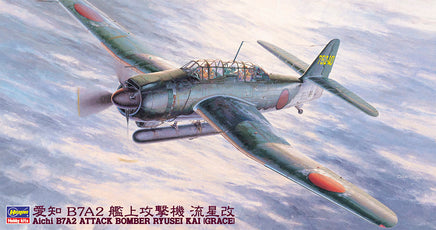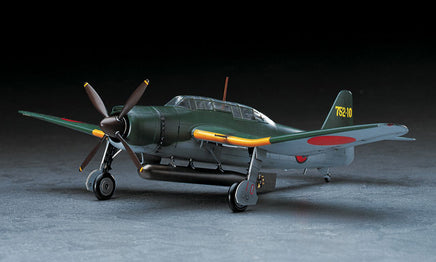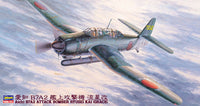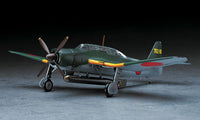The Aichi Ryusei Kai was a carrier-based attack aircraft produced by the Imperial Japanese Navy in the final stages of World War II. Until then, the Navy had developed separate aircraft for dive bombing and torpedo attacks, but the Ryusei was designed to perform both roles in a single airframe.
In 1941 (Showa 16), the Navy ordered Aichi Aircraft to develop a carrier-based attack aircraft capable of torpedo attacks, level bombing, and dive bombing, designated as the 16-Shi Carrier Attack Aircraft.
Faced with extremely demanding requirements for speed, armament, and maneuverability, Aichi began research in October 1941 and completed the first prototype in December 1942. However, due to excessive weight, the second prototype underwent a complete redesign of the wing structure and other components to reduce weight.
To accommodate an internal bomb bay, the Ryusei adopted a mid-wing configuration. To avoid excessively long landing gear struts, it featured a distinctive inverted gull wing design. Other notable features included double-slotted flaps, aileron-linked flaperons, an adjustable horizontal stabilizer, and retractable dive brakes for dive bombing.
The prototypes and pre-production models were designated as Experimental Ryusei (B7A1), powered by the Homare 11 engine. Production models were called Ryusei Kai (B7A2), equipped with either the Homare 12 or Homare 21 engine. A total of 111 units were produced by the end of the war. Although designed as a carrier-based aircraft, it was never deployed on aircraft carriers and was used exclusively from land bases.
Specifications:
- Crew: 2
- Wingspan: 14.40 m
- Length: 11.49 m
- Height: 4.07 m
- Loaded Weight: 5,700 kg
- Engine: Homare 12, air-cooled, 18-cylinder twin-row radial
- Power Output: 1,825 hp ×1
- Range: 3,040 km (bombing), 2,980 km (torpedo attack)
- Maximum Speed: 543 km/h
- Fixed Armament: 20 mm cannons in the wings; one rear-mounted 7.7 mm or 13 mm flexible machine gun x 2
- Bomb Load: 500–800 kg bomb or two 250 kg bombs x 1
- Torpedo Load: 800 kg torpedo x 1




